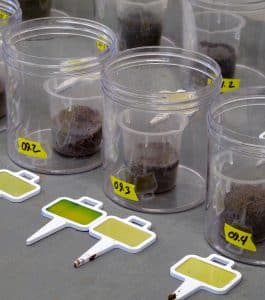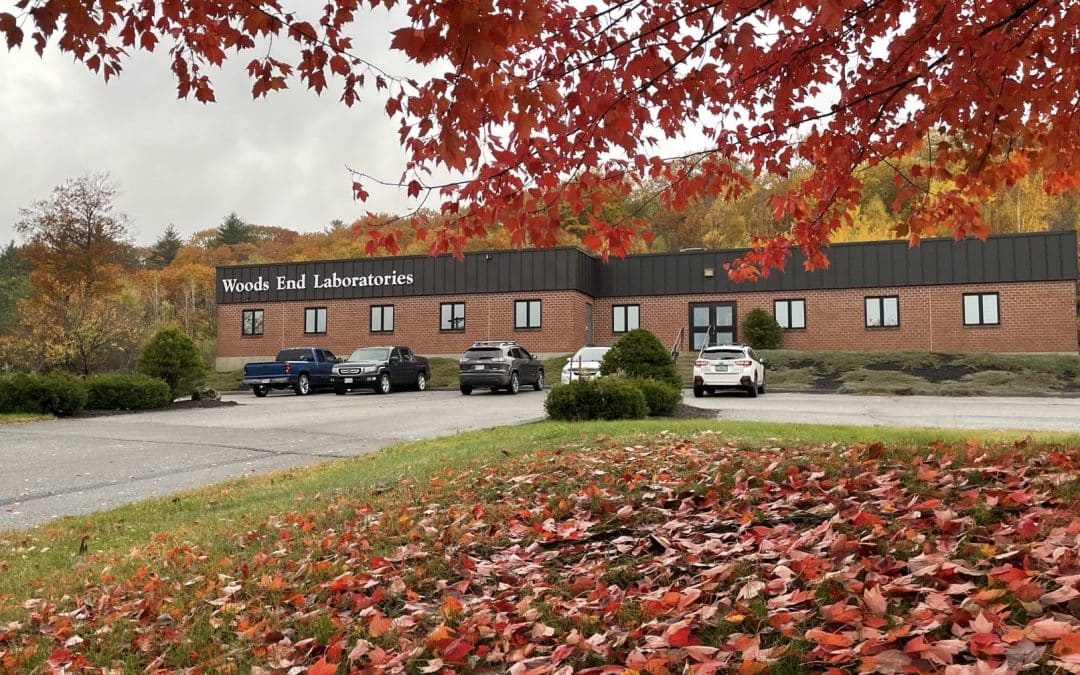Agricultural Soil Testing – Woods End Labs – Augusta Maine
“It’s a total game changer for agricultural soil testing”
That’s how Rebecca Harvey, Ph.D., and CEO of Woods End Laboratories, describes the impact of the agricultural soil testing company’s recent relocation from Mount Vernon to Augusta Maine – a move that will triple its laboratory and manufacturing space to 13,500 square feet.
“This opens us up to expanding our agricultural soil testing services, not just in the volume of samples and projects that we can be involved in, but also in the different types of projects we do,” says Harvey, who joined Woods End last April and aims to grow its presence throughout the U.S. and internationally. “We can build on our foundation as a high-quality agricultural soil testing and research laboratory. The increased space allows us to build out our analytical capabilities to support agricultural soil testing even more.”
Woods End was acquired in 2021 by Deveron, a leading agricultural digital services company and insights provider, and A&L Canada Laboratories, a provider of leading-edge agricultural analyses. According to Deveron, the joint venture has created a turnkey soil health platform for the U.S. agricultural markets and strengthens the U.S. and international markets for Woods End’s flagship brand , a leading soil health diagnostic product used worldwide to help measure biological activity in soil and composts.
Woods End was founded in 1974 by William Brinton, Ph.D., a soil scientist who teaches at the University of Maine. Brinton introduced soil health testing in the mid-1980s and enhanced it the 1990s when he invented Solvita gel probes and the digital color reader technology. Harvey stresses that Woods End has the advantage of being the first laboratory to offer soil health testing to gauge soil biological fertility.
“Solvita is something Dr. Brinton developed before anybody was talking about soil health testing on any large scale,” Harvey says. “And we’ve had the opportunity to perfect our methodologies and deliver a tool to our customers and our users that is top notch.”
When Harvey joined Woods End, she knew it was a good fit considering her experience in carbon science (her post-doctoral research) and Woods End’s emphasis on carbon testing.
“The more I learned about the position, the more I felt like it was designed for somebody with my background,” says Harvey, who has extensive experience in laboratory analytics, research, and process implementation. “But I was also attracted with the opportunity to get back in on the ground level of research and development.”
Harvey, who was previously the director of the Vermont Agriculture and Environmental Laboratory, says research and development is a foundation of Woods End’s business model. It not only conducts research and development for its own products but also in collaboration with private groups and universities.
Agricultural Soil Testing Tailored Toward Users
Harvey stresses that Woods End incorporates many different physical, chemical, and biological parameters in Solvita, more than other soil health tests that are available.
“We also tailor it to the users,” she added. “We understand who the users are, where they are geographically, what types of soils they’re working with, and the different commodities they’re working with to make recommendations to them.”
Amanda Diochon , Ph.D., Professor in the Department of Geology at Lakehead University in Ontario, Canada, has implemented the Solvita Soil Health Suite kit in her studies. The kit combines a set of simple, reliable tests from the Solvita family into routine nutrient tests. “I think it will be a really great addition to my research program and outreach activities,” Diochon says.
Brinton once said, “Soil health is critical to the future of society in so far as it links farming, nutrition, and climate under the theme of sustainable practices.” Harvey, of course, has embraced that thinking and believes others in the agricultural sector have as well.
“We’ve come to realize that these principles, thought processes, and values are scalable,” she said. “They’re not just for medium- and small-scale organic farmers in New England. They’re for the scalable big ag industry. Soil health is becoming more mainstream, and people are becoming more comfortable with the idea of treating soil as a healthy, breathing organism.”
Consequently, more laboratories have begun offering soil health tests. “The challenge is everybody has a slightly different flavor as to what soil health tests look like and what they entail,” Harvey states.
But Harvey emphasizes that Woods End has the luxury of having Solvita, which differentiates the company from its competition. Solvita is used across several markets and for a variety of applications. It’s also practical and cost effective and doesn’t require an elaborate lab setup.
While Woods End will continue to update interfaces used for Solvita to make them more user friendly, Harvey says nothing has or will ever be changed to the chemistry of the tool.
“One of the advantages of having a steadfast standardized tool is that it can be used to monitor long-term changes in an ecosystem, ”Harvey says. “We want to continue to promote Solvita and make it easier to use, easier to interpret, and easier to apply without changing the fundamental science on which it was developed.”
Harvey notes that Woods End has expanded Solvita into other scalable tools such as soil aggregate testing and infrared monitoring of soil and compost carbon biodegradation.
Setting the Bar
There’s something else Woods End has going for it in the soil health testing sector: Experience. The company will celebrate 50 years in 2024.
“We have a reputation of doing very good work and being experts in the work we do,” Harvey says. “We’re not just jumping on the bandwagon with our own soil health test – we’ve been doing this for almost 50 years. We set the bar in that respect.”
Harvey wants to continue to raise the bar in other areas of Woods End’s operations. For instance, she says there is an immediate need for emerging contaminant testing in agriculture, specifically for polyfluoroalkyl substances (PFAS), which are manufactured chemicals found in everyday products. Problem is, there’s a shortage of laboratories with the analytical capabilities to test for PFAS.
“It’s a passion of mine to bring that testing to fruition at Woods End,” Harvey says, noting that she soon plans to add the required staff and equipment to do so.
She also touts Woods End’s work in compost, citing several studies measuring whether certain items live up to their claims of being biodegradable. “There aren’t many labs that do this, and it’s a field we got in early,” she says. “Now we have the increased capacity for such studies here at the new facility.”
Harvey also expects Woods End’s rapidly expanding carbon testing to evolve. “As time progresses, our clients will want to be able to document and demonstrate that their land-use management practices have efficiently sequestered carbon into the soil,” she says. “So, we’ll need to come back and verify that. I see this being a continuous program to help document and prove that these practices to sequester carbon are effective.”
With its game-changing new laboratory and increased space, not to mention the company’s vast experience, Harvey is enthusiastic about the momentum Woods End has gained to accelerate its offerings.
“The world is our oyster,” she says.

